Publikationen
Hier finden Sie eine Auflistung unserer Publikationen der letzen Jahre mit dem Schwerpunkt neuromuskuläre Medizin.
Aus rechtlichen Gründen ist es leider nicht möglich bei allen Publikationen einen Volltext zur Verfügung zu stellen, wir bitten um Ihr Verständnis. 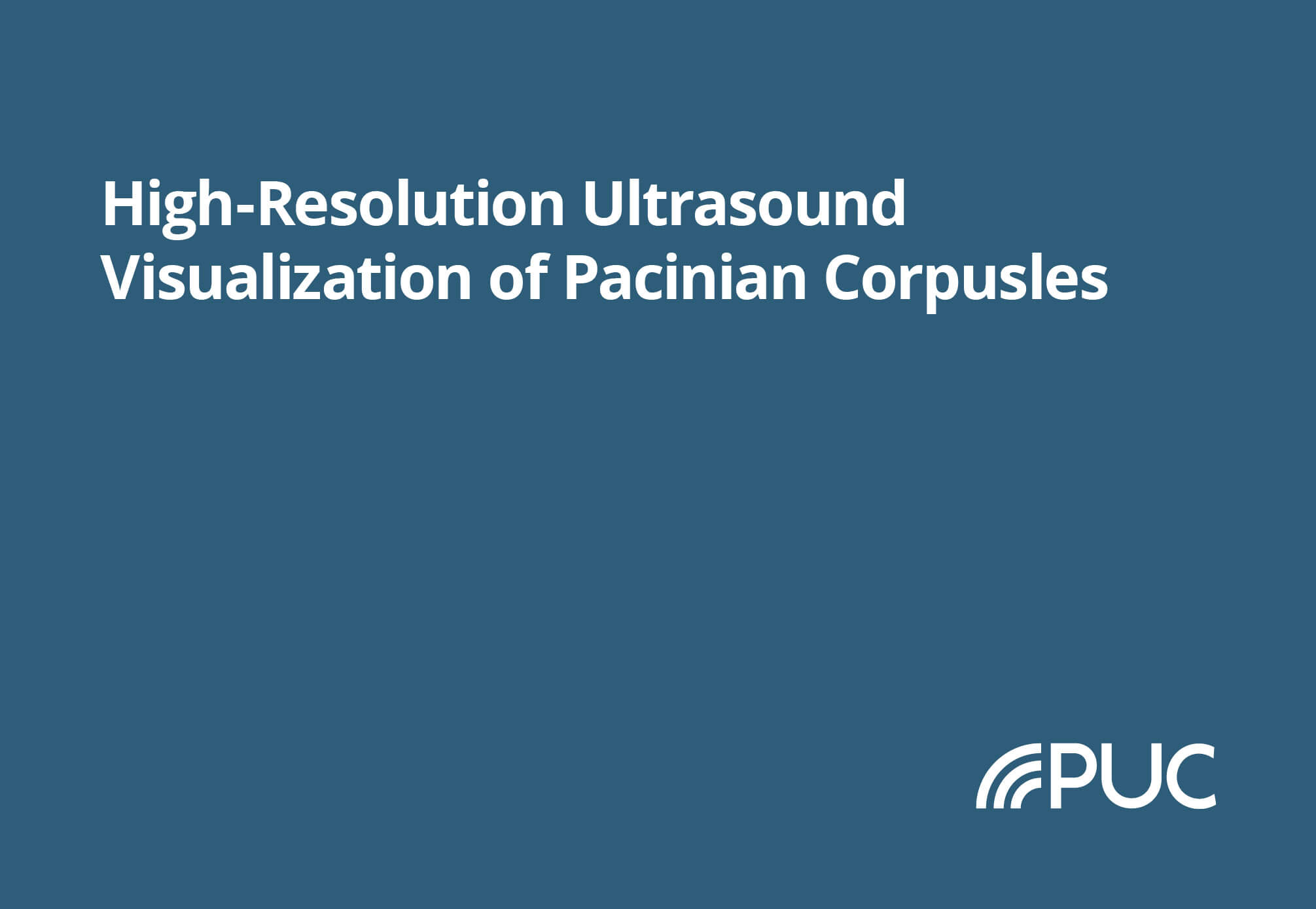
Ultrasound Med Biol. 2018
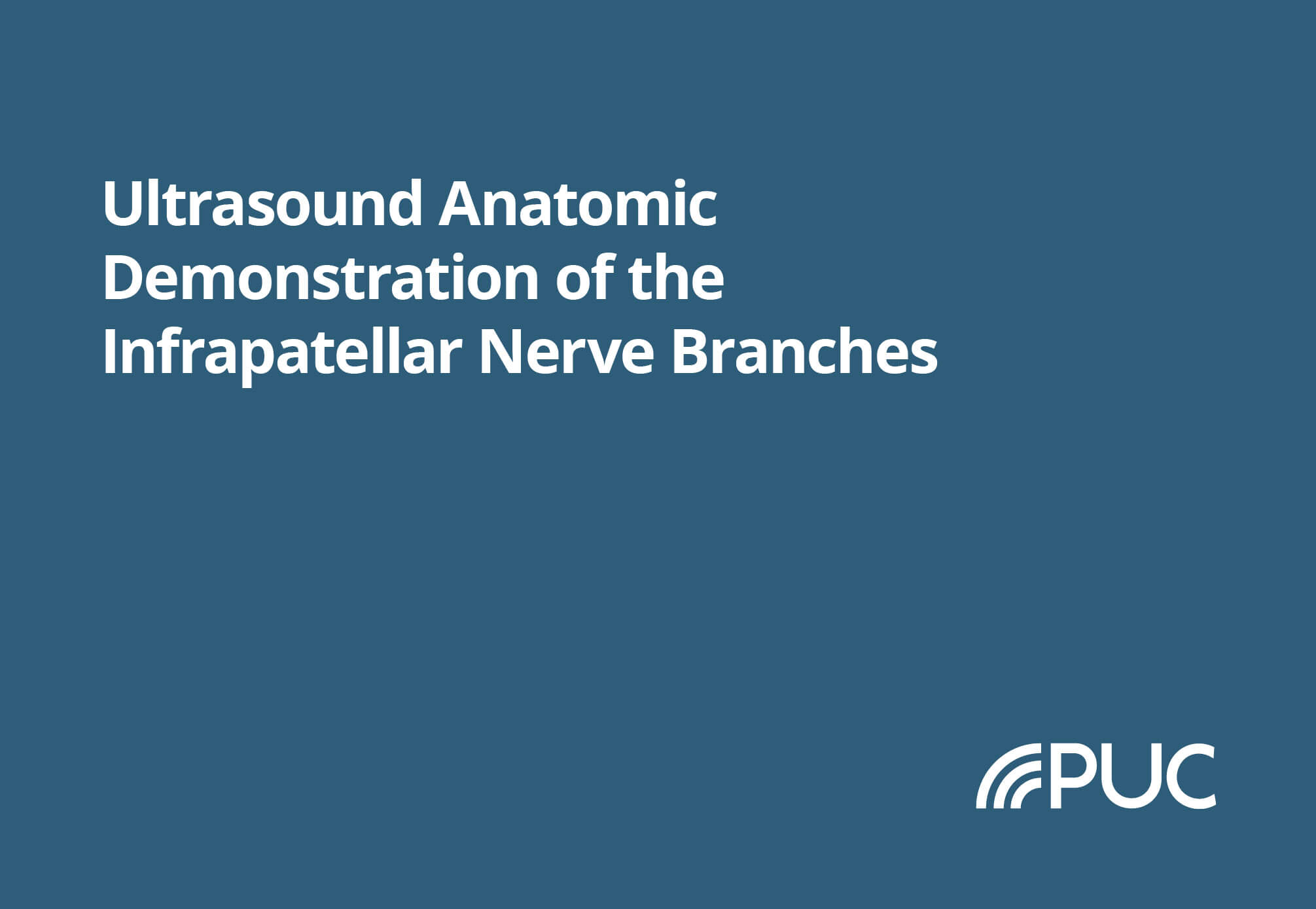
Arthroscopy 2018
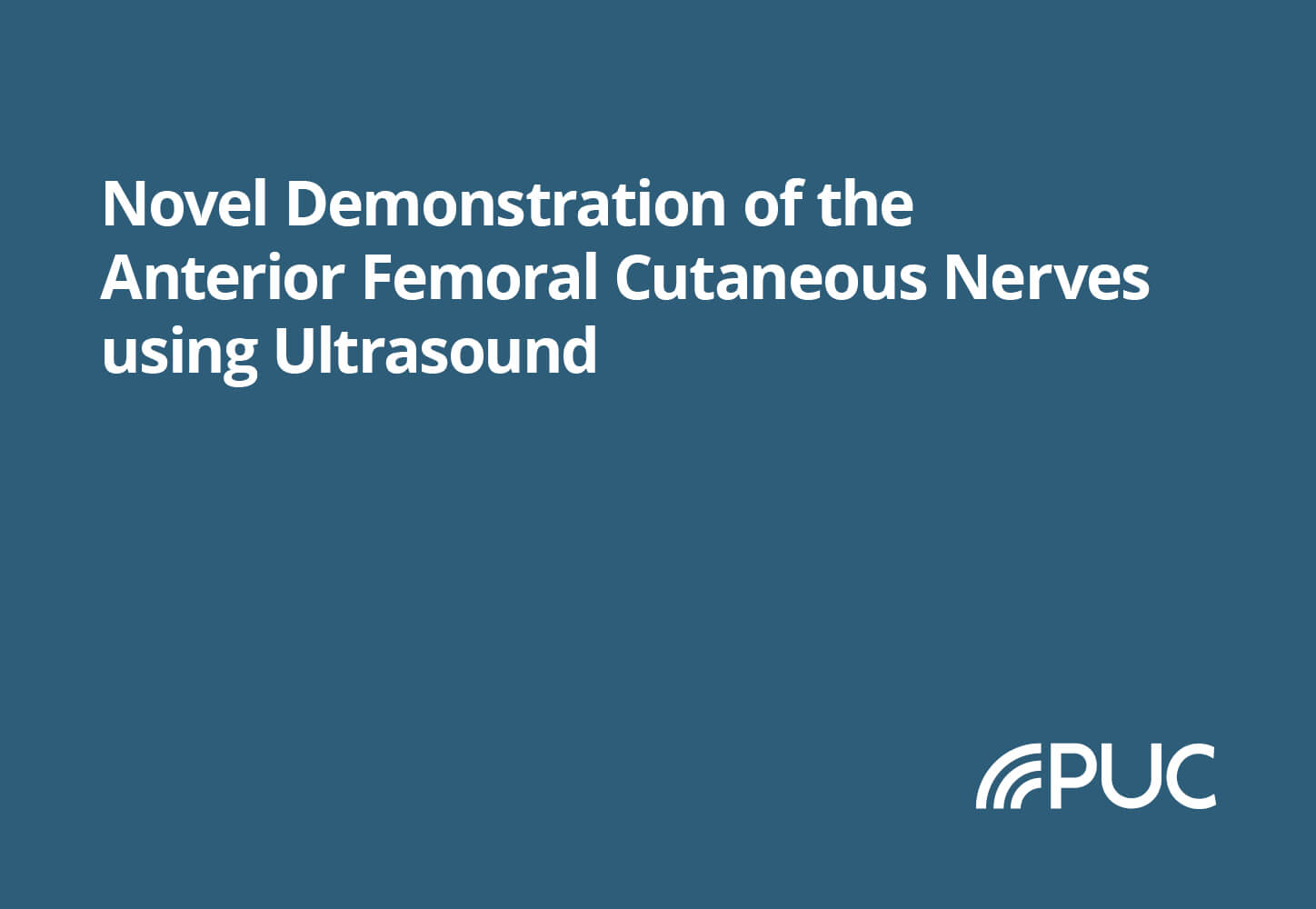
Ultraschall Med. 2018
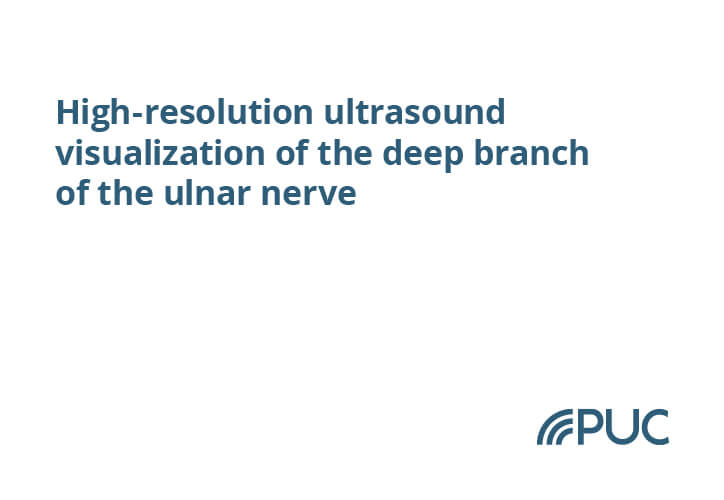
Muscle Nerve. 2017 Dec
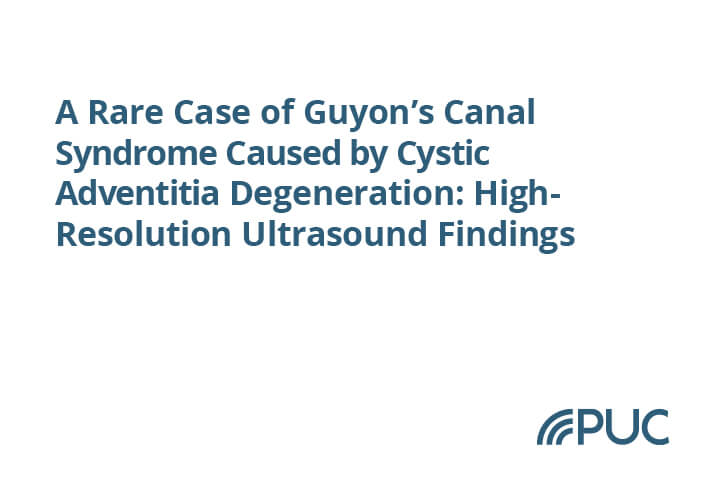
Ultraschall Med. 2017 Oct
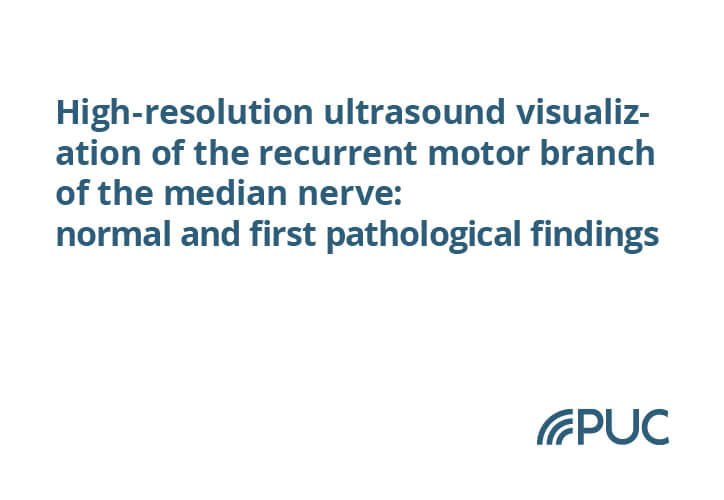
Eur Radiol. 2017 Jul
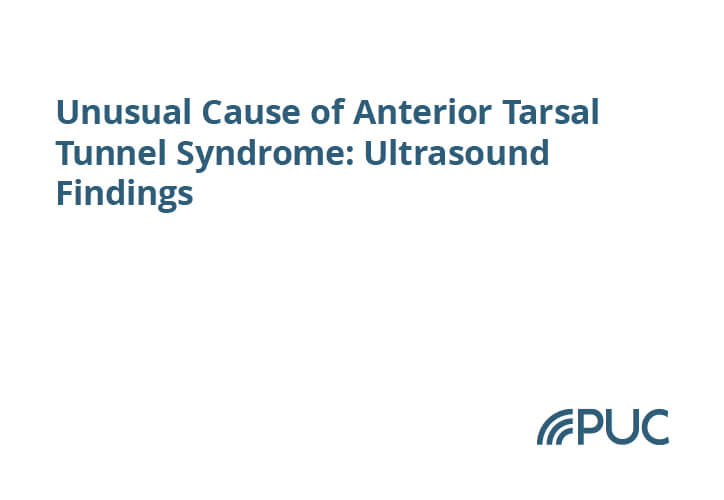
J Ultrasound Med. 2017 Apr
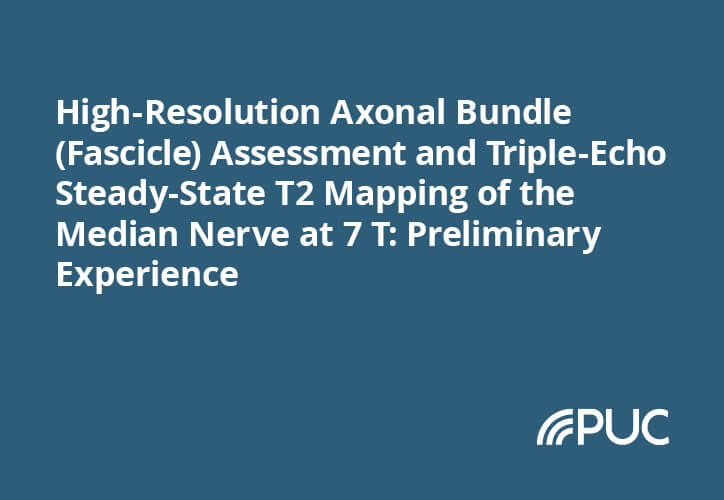
Invest Radiol. 2016 Aug
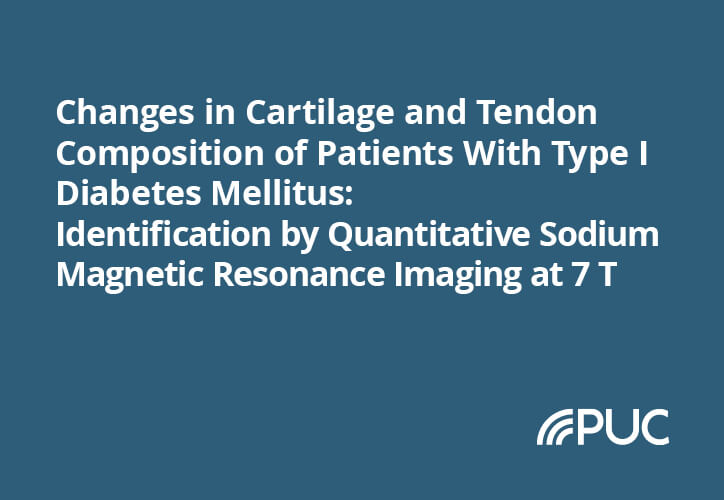
Invest Radiol. 2016 Apr

Wien Med Wochenschr. 2016 Feb
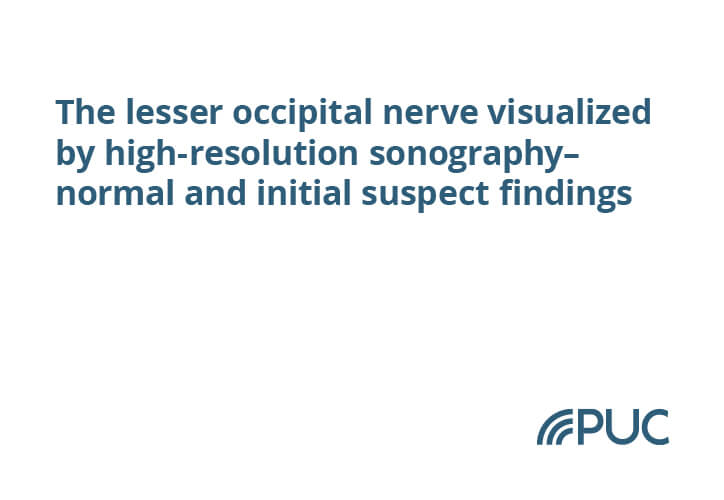
Cephalalgia. 2015 Aug
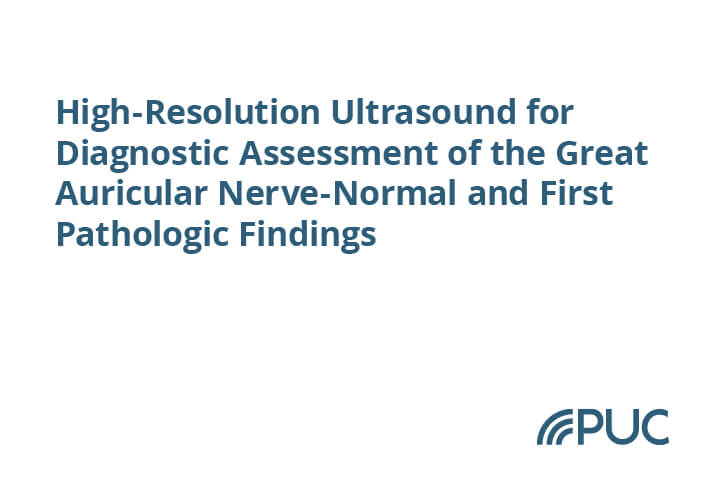
Ultraschall Med. 2015 Aug
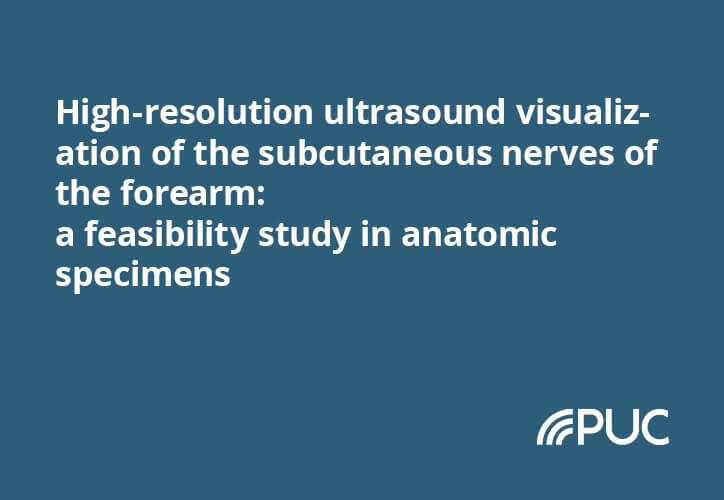
Muscle Nerve. 2014 May
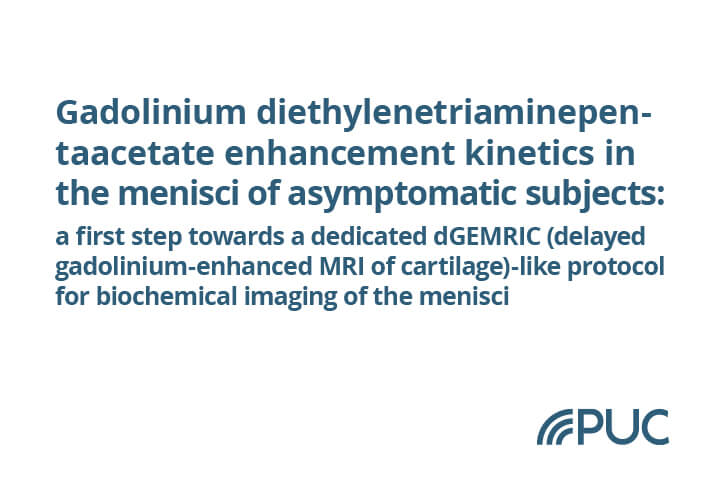
NMR Biomed. 2011 Dec
-

Ultrasound Med Biol. 2018
Abstract:
The aim of this study was to evaluate the possibility of visualizing Pacinian corpuscles in the palm of the hand with high-resolution ultrasound (HRUS). In this prospective study, HRUS with a high-frequency probe (22 MHz) was used. The palms of two fresh cadaveric hands were screened for potential Pacinian corpuscles. Still ultrasound images and dynamic video sequences were obtained. In five regions with large amounts of suspected Pacinian corpuscles, tissue blocks were excised and histologically processed, and corresponding slices were com- pared with ultrasound images. Further, the transverse diameters of five Pacinian corpuscles, at the level of the metacarpal heads in the palm, were assessed on both sides (in total 100) in healthy volunteers. On ultrasound, Pacinian corpuscles presented as echolucent dots in the subcutis, adjacent to digital nerves and vessels and located 23 mm beneath the surface. On histologic sections, these echolucent dots corresponded to Pacinian cor- puscles with respect to their position and topographic relationships. The mean transverse diameter for all volun- teers was 1.40 § 0.23 mm (range: 0.82.2 mm). This study confirms the ability to reliably visualize Pacinian corpuscles with HRUS, which contributes to our basic understanding of ultrasonographically visible subcutane- ous structures and may enhance the diagnosis of pathologies related to Pacinian corpuscles.
© 2018 World Federation for Ultrasound in Medicine & Biology. All rights reserved.
Arthroscopy 2018
PURPOSE:
To (1) confirm the correct identification of the infrapatellar branches of the saphenous nerve (IPBSNs) by high-resolution ultrasound (HRUS) with ink marking and consecutive dissection in anatomic specimens; (2) evaluate the origin, course, and end-branch distribution in healthy volunteers; and (3) visualize the variable anatomic course of the IPBSN by HRUS.
MATERIALS AND METHODS:
HRUS with high-frequency probes (15-22 MHz) was used to locate the IPBSN in 14 fresh anatomic specimens at 4 different locations. The correct identification of the IPBSN was verified by ink marking and consecutive dissection. Moreover, the IPBSNs were located in both knees of 20 healthy volunteers (n 1⁄4 40). Their courses were marked on the volunteers’ skin in a flexed-knee position. Distances were measured from the IPBSN branch closest to the median of the patella base (D1), center (D2), and apex (D3) and in a 45 (D4) and 0 (D5) relation to the median patella apex. Standardized photographs of all knees were mapped on 1 typically shaped knee.
RESULTS:
Dissection confirmed the correct identification of the IPBSN in 86% to 100% of branches, depending on their location. Intra- individual differences for distance measurements were observed for D1 (P < .001) and D2 (P 1⁄4 .002). The coefficient of variation was highest for D5 (0.86) and lowest for D1 (0.14). Mapping of the nerve branches on a typical knee showed a highly variable course for the IPBSN.
CONCLUSION:
This study confirmed the reliable ability to visualize the IPBSN and its variations with HRUS in anatomic specimens and in healthy volunteers; such visualization may therefore enhance the diagnostic and therapeutic management of patients with anteromedial knee pain.
© 2018 by the Arthroscopy Association of North America
Ultraschall Med. 2018
PURPOSE:
Neuropathy of the intermediate (IFCN) and medial femoral cutaneous nerve (MFCN) is a potential iatrogenic complication of thigh surgery and its diagnosis is limited. This study aimed to evaluate the possibility of the visualization and diagnostic assessment of the IFCN and MFCN with high-resolution ultrasound (HRUS).
MATERIALS AND METHODS:
In this study, HRUS with high-frequency probes (15 - 22MHz) was used to locate the IFCN and the MFCN in 16 fresh cadaveric lower limbs. The correct identification of the nerves was verified by ink-marking and consecutive dissections at sites correlating to nerve positions (R1 - 3), namely, the origin, the mid portion, and the distal portion, respectively. 12 cases with suspected IFCN and MFCN lesions referred to our clinic for HRUS examinations were also assessed.
RESULTS:
Anatomical dissection confirmed the correct identification of the IFCN in 16/16 branches at all of the different locations (100 %). MFCN was correctly identified at R1 + 3, in all cases (16/16; 100 %), and in 14/16 cases (88 %) at (R2). 12 cases of patients with IFCN and MFCN pathologies (all of iatrogenic origin) were identified. 9 instances of structural damage were visible on HRUS, and all pathologies were confirmed by almost complete resolution of symptoms after selective HRUS-guided blocks with 0.5 - 1 ml lidocaine 2 %.
CONCLUSION:
This study confirms that the IFCN and the MFCN can be reliably visualized with HRUS throughout the course of these nerves, both in anatomical specimens and in patients.
© Georg Thieme Verlag KG Stuttgart · New York.
Muscle Nerve. 2017 Dec
INTRODUCTION:
The value of imaging the deep branch of the ulnar nerve (DBUN) over its entire course has not been clarified. Therefore, this study evaluates the feasibility of visualizing the DBUN from its origin to the most distal point.
METHODS:
We performed high-resolution ultrasound (HRUS) with high-frequency probes (18-22 MHZ), HRUS-guided ink marking, and consecutive dissection in 8 fresh cadaver hands. In both hands of 10 healthy volunteers (n = 20), the cross-sectional area (CSA) was measured at 2 different locations (R1 and R2).
RESULTS:
The DBUN was clearly visible in all anatomical specimens and in healthy volunteers. Dissection confirmed HRUS findings in all anatomical specimens. The mean CSA was 1.8 ± 0.5 mm2 at R1 and 1.6 ± 0.4 mm2 at R2.
DISCUSSION:
This study confirms that the DBUN can be reliably visualized over its entire course with HRUS in anatomical specimens and in healthy volunteers. Muscle Nerve 56: 1101-1107, 2017.
© 2017 Wiley Periodicals, Inc.
Ultraschall Med. 2017 Oct
A Rare Case of Guyon's Canal Syndrome Caused by Cystic Adventitia Degeneration: High-Resolution Ultrasound Findings.

Eur Radiol. 2017 Jul
PURPOSE:
To evaluate in a prospective study the possibility of visualization and diagnostic assessment of the recurrent motor branch (RMB) of the median nerve with high-resolution ultrasound (HRUS).
MATERIALS AND METHODS:
HRUS with high-frequency probes (18-22 MhZ) was used to locate the RMB in eight fresh cadaveric hands. To verify correct identification, ink-marking and consecutive dissection were performed. Measurement of the RMB maximum transverse-diameter, an evaluation of the origin from the median nerve and its course in relation to the transverse carpal ligament, was performed in both hands of ten healthy volunteers (n = 20). Cases referred for HRUS examinations for suspected RMB lesions were also assessed.
RESULTS:
The RMB was clearly visible in all anatomical specimens and all volunteers. Dissection confirmed HRUS findings in all anatomical specimens. Mean RMB diameter in volunteers was 0.7 mm ± 0.1 (range, 0.6-1). The RMB originated from the radial aspect in 11 (55%), central aspect in eight (40%) and ulnar aspect in one (5%) hand. Nineteen (95%) extraligamentous courses and one (5%) subligamentous course were detected. Three patients with visible RMB abnormalities on HRUS were identified.
CONCLUSION:
HRUS is able to reliably visualize the RMB, its variations and pathologies.
KEY POINTS:
• Ultrasound allows visualization of the recurrent motor branch of the median nerve. • Ultrasound may help clinicians to assess patients with recurrent motor branch pathologies. • Patient management may become more appropriate and targeted therapy could be improved.

J Ultrasound Med. 2017 Apr

Invest Radiol. 2016 Aug
OBJECTIVES:
The aims of this preliminary study were to determine the number of axonal bundles (fascicles) in the median nerve, using a high-resolution, proton density (PD)-turbo spin echo (TSE) fat suppression sequence, and to determine normative T2 values, measured by triple-echo steady state, of the median nerve in healthy volunteers and in patients with idiopathic carpal tunnel syndrome (CTS), at 7 T.
MATERIALS AND METHODS:
This prospective study was approved by the local ethics committee and conducted between March 2014 and January 2015. All study participants gave written informed consent. Six healthy volunteers (30 ± 12 years) and 5 patients with CTS (44 ± 16 years) were included. Measurements were performed on both wrists in all volunteers and on the affected wrist in patients (3 right, 2 left). Based on 5-point scales, 2 readers assessed image quality (1, very poor; 5, very good) and the presence of artifacts that might have a possible influence on fascicle determination (1, severe artifacts; 5, no artifacts) and counted the number of fascicles independently on the PD-TSE sequences. Furthermore, T2 values by region of interest analysis were assessed. Student t tests, a hierarchic linear model, and intraclass correlation coefficients (ICCs) were used for statistical analysis.
RESULTS:
Proton density-TSE image quality and artifacts revealed a median of 5 in healthy volunteers and 4 in patients with CTS for both readers. Fascicle count of the median nerve ranged from 13 to 23 in all subjects, with an ICC of 0.87 (95% confidence interval [CI], 0.67-0.95). T2 values were significantly higher (P = 0.023) in patients (24.27 ± 0.97 milliseconds [95% CI, 22.19-26.38]) compared with healthy volunteers (21.01 ± 0.65 milliseconds [95% CI, 19.61-22.41]). The ICC for all T2 values was 0.97 (95% CI, 0.96-0.98).
CONCLUSIONS:
This study shows the possibility of fascicle determination of the median nerve in healthy volunteers and patients with CTS (although probably less accurately) with high-resolution 7 T magnetic resonance imaging, as well as significantly higher T2 values in patients with CTS, which seems to be associated with pathophysiological nerve changes.

Invest Radiol. 2016 Apr
OBJECTIVE:
The aim of this study was to investigate possible biochemical alterations in tendons and cartilage caused by type 1 diabetes mellitus (DM1), using quantitative in vivo 7 T sodium magnetic resonance (MR) imaging.
MATERIALS AND METHODS:
The institutional review board approved this prospective study, and written informed consent was obtained. Eight DM1 patients with no history of knee trauma and 9 healthy age- and weight-matched volunteers were examined at 7 T using dedicated knee coils.All participants underwent morphological and sodium MR imaging. Region-of-interest analysis was performed manually for the non-weight-bearing area of the femoral condyle cartilage and for the patella tendon. Two readers read the image data sets independently, twice, for intrareader and interreader agreement. Normalized mean sodium signal intensity (NMSI) values were compared between patients and volunteers for each reader using analysis of variance.
RESULTS:
On morphological images, cartilage in the non-weight-bearing area and the patellar tendon was intact in all patients. On sodium MR imaging, bivariate analysis of variance showed significantly lower mean NMSI values in the cartilage (P = 0.008) and significantly higher values in the tendons (P = 0.025) of patients compared with those of volunteers.
CONCLUSION:
Our study showed significantly different NMSI values between DM1 patients and matched volunteers. Differences observed in the cartilage and tendon might be associated with a DM1-related alteration of biochemical composition that occurs before it can be visualized on morphological MR sequences.

Wien Med Wochenschr. 2016 Feb
Abstract
The aim is to review the modalities in musculoskeletal imaging with view on the prognostic impact for the patient's and for social outcome and with view on three major fields of preventive medicine: nutrition and metabolism, sports, and patient education. The added value provided by preventive imaging is (1) to monitor bone health and body composition with a broad spectrum of biomarkers, (2) to detect and quantify variants or abnormalities of nerves, muscles, tendons, bones, and joints with a risk of overuse, rupture, or fracture, and (3) to develop radiology reports from the widely used narrative format to structured text and multimedia datasets. The awareness problem is a term for describing the underreporting and the underdiagnosis of fragility fractures in osteoporosis.

Cephalalgia. 2015 Aug
BACKGROUND:
The lesser occipital nerve (LON) supplies the lateral part of the occiput and is-together with the greater occipital nerve (GON)-involved in headache pathogenesis. While the GON was described in high-resolution ultrasound (HRUS), the same does not apply to the LON. We aimed at characterizing the LON in HRUS, and present cases of suspect findings in the course of the LON identified by HRUS.
METHODS:
The LON was examined bilaterally in eight anatomical specimens with HRUS (n = 16). HRUS-guided ink marking and consecutive dissection was performed. Further, measurements of the LON diameter were performed in 10 healthy volunteers (n = 20), and patient charts were reviewed to identify patients who were considered to have possible pathology of the LON.
RESULTS:
The LON was identified correctly in all cadavers on both sides and all volunteers except for one side (n = 19). The average diameter was 1.08 ± 0.30 mm. Four patients with pain within the LON territory and presumed peripheral origin of headache (defined as resolution of headache after diagnostic HRUS-guided selective blockade) were identified, and three of these showed interference of the LON with lymph nodes or an accessory muscle belly.
DISCUSSION:
We confirm the possibility of visualization of the LON using HRUS. HRUS may be a helpful adjunct tool in the assessment of patients with atypical headache.
© International Headache Society 2014.
Ultraschall Med. 2015 Aug
PURPOSE:
The great auricular nerve (GAN) is a sensory branch of the superficial cervical plexus. While its blockade is an established procedure, little is known about the ultrasound appearance of pathologic conditions of the GAN itself. We, therefore, aimed to evaluate the possibility of the visualization and diagnostic assessment of the GAN along its entire course by means of high-resolution ultrasound (HRUS).
MATERIALS AND METHODS:
To assess the feasibility of visualization, we performed HRUS with an 18 MHz probe, HRUS-guided, fine-needle ink markings and consecutive dissection in six anatomical specimens. Then, we measured the diameter of the GAN in healthy volunteers and finally performed a retrospective review of patients referred for HRUS examinations because of pain within GAN territory between August 1, 2012 and August 1, 2013.
RESULTS:
The GAN was clearly visible with HRUS from its formation to the final branches, and was marked successfully on both sides in all anatomical specimens (n = 12). The mean average in-vivo was 0.14 cm ± 0.03 (range 0.08-0.2). Seven cases of patients with GAN pathologies of various origins (idiopathic, traumatic, tumorous and iatrogenic) were identified, of which 6 were visible on HRUS and all of which could be confirmed by complete resolution of symptoms after selective HRUS-guided GAN block.
CONCLUSION:
This study confirms the reliable ability to visualize the GAN with HRUS throughout its course, both in anatomical specimens and in vivo. The provided cases show that pathologies of the GAN seem to have a variety of causes and may not be rare. We, therefore, encourage the use of HRUS in patients with unclear pain in the auricular, periauricular and posterior-lateral head.
© Georg Thieme Verlag KG Stuttgart · New York.
Muscle Nerve. 2014 May
Introduction:
The aim of this ultrasound-anatomical study was to evaluate the ability of high-resolution ultrasound (HRUS) to visualize and infiltrate small subcutaneous nerves of the forearm in anatomic specimens.
METHODS:
Seven nonembalmed human bodies (4 men, 3 women; mean age at death, 60 years) were included in the study. Two investigators scanned the anatomic specimens using 15-MHz and 18-MHz HRUS transducers. The lateral, medial, and posterior antebrachial cutaneous nerves were scanned and interventionally marked with ink using HRUS-guidance. Subsequently, dissections were performed to assess the anatomical correlation of HRUS findings.
RESULTS:
All 3 nerves were identified consistently using HRUS. The precision of the ink-markings was excellent, with good correlation with the small peripheral branches of all 3 nerves.
CONCLUSIONS:
HRUS can identify precisely the small subcutaneous nerves of the forearm and may aid in both diagnosis and therapy in cases of neuropathy.
Copyright © 2013 Wiley Periodicals, Inc.
NMR Biomed. 2011 Dec
BACKGROUND:
It was our aim to investigate the gadolinium diethylenetriaminepentaacetate (Gd-DTPA(2-) ) enhancement kinetics in the menisci of the knee joint over a prolonged period of time.
METHODS:
Six asymptomatic volunteers (four men and two women; mean age, 25 ± 2.4 years) were enrolled. Sagittal, T(1) -weighted, spin-echo MR sequences of the right knee joint were obtained at 3 T. Imaging was performed before (baseline), 1 h after and in half-hour intervals up to 9 h after the intravenous administration of 0.2 mmol/kg of Gd-DTPA(2-) . To measure the rates of contrast enhancement relative to the baseline, regions of interest that covered the anterior and posterior horns of the medial and lateral meniscus were defined on each of two adjacent sections, and enhancement curves were constructed.
OUTCOMES:
An enhancement peak between 2.5 and 4.5 h after Gd-DTPA(2-) administration was observed, and analysis of variance also revealed no significant difference (p=0.94), in terms of enhancement, within this time interval. Pair-wise, post hoc testing also revealed no significant differences between 2.5 and 3, 3 and 3.5, 3.5 and 4, and 4 and 4.5 h post Gd-DTPA(2-) application.
RESULTS:
Our preliminary data therefore suggest that the time window suitable for a dGEMRIC (delayed gadolinium-enhanced MRI of cartilage)-like T(1) mapping of the menisci is relatively short, and lies between 2.5 and 4.5 h after Gd-DTPA(2-) injection.
Copyright © 2011 John Wiley & Sons, Ltd.
